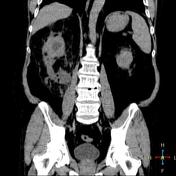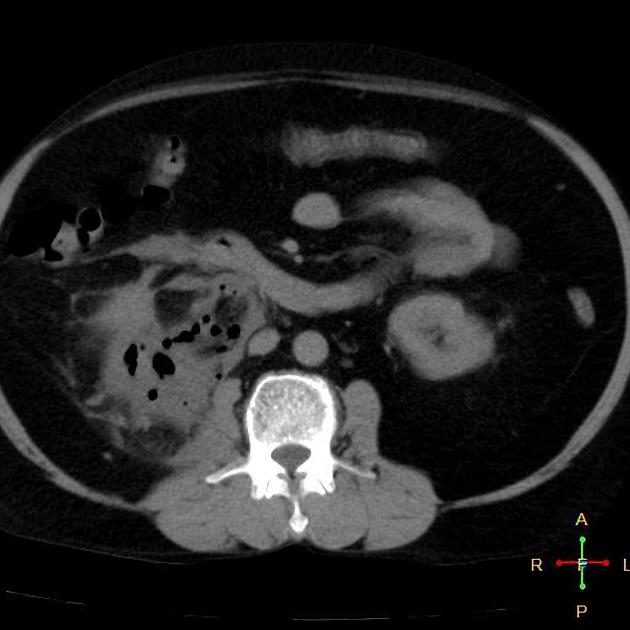Presentation
Right loin pain
Patient Data





CT of the abdomen demonstrates abnormal right sided perinephric fluid collections associated with abnormal thickening of the anterior and posterior perirenal fascia as well as the bridging septa within the space. Extensive involvement of the perinephric space with gas densities. The presence of gas is the key finding of perinephric infection. Note also the accentuated left renal fascial planes. There is also a right renal stone.
Case Discussion
The perinephric space is limited anteriorly by the Gerota fascia, and posteriorly by the Zuckerkandl fascia, and laterally by lateroconal fascia. It contains the kidneys, the adrenal glands, the proximal ureters, fat and lymphatics. On the right side, the deficient anterior renal fascia superiorly causes the perirenal space to communicate with the bare area of the liver, so any pathologic processes can extend upward into the bare area of the liver on the right side and towards the subphrenic space on the left side.
The perirenal space has thin septa transversing the perirenal fat and it connects the renal capsule to perirenal fascia. Any abnormal thickening of those lamellae may be an early sign of renal or perirenal disease.




 Unable to process the form. Check for errors and try again.
Unable to process the form. Check for errors and try again.